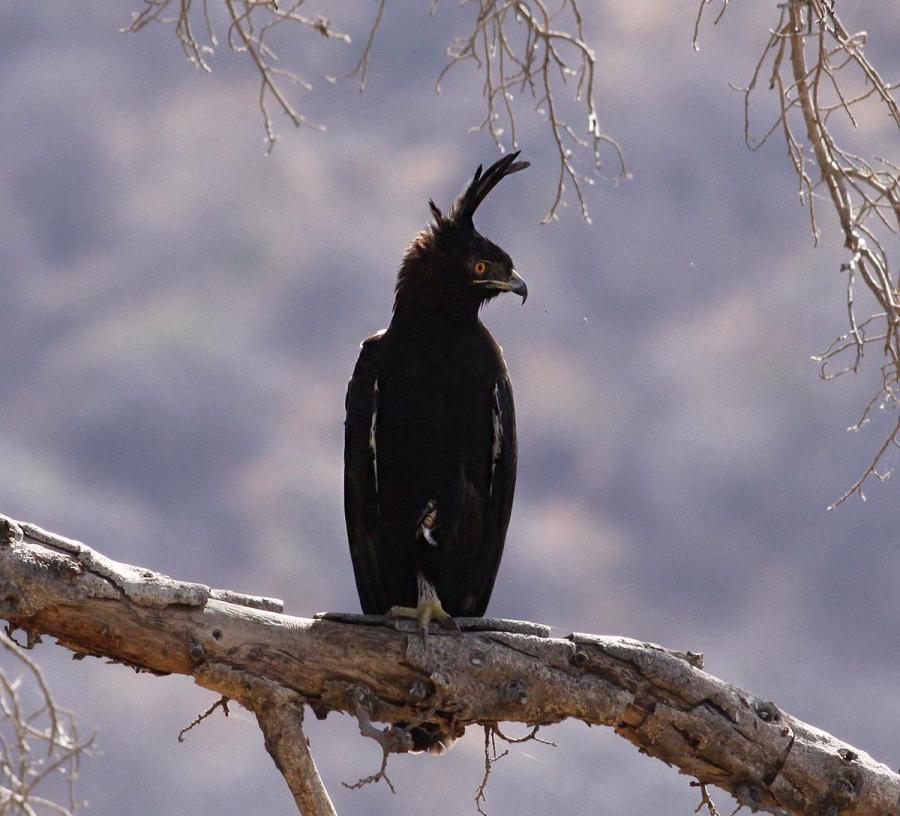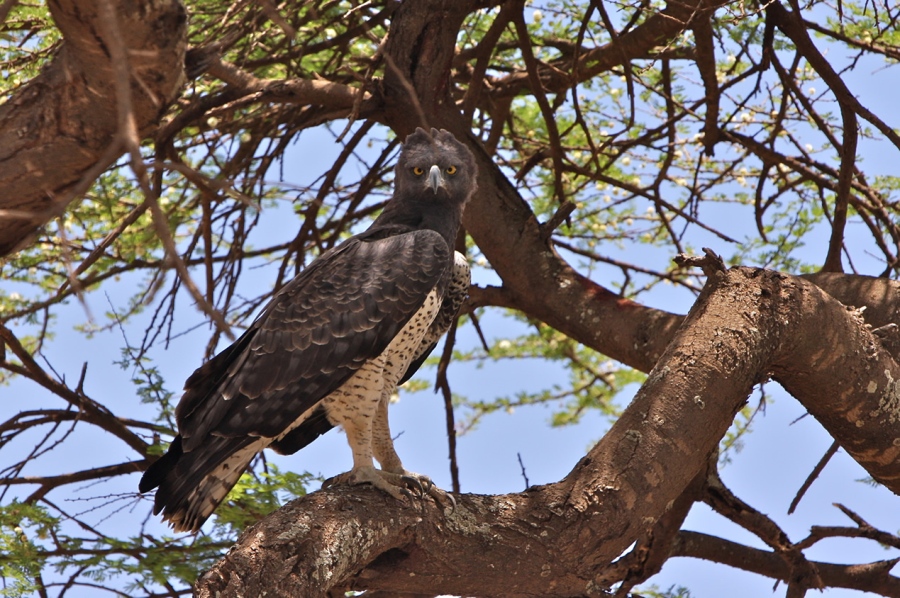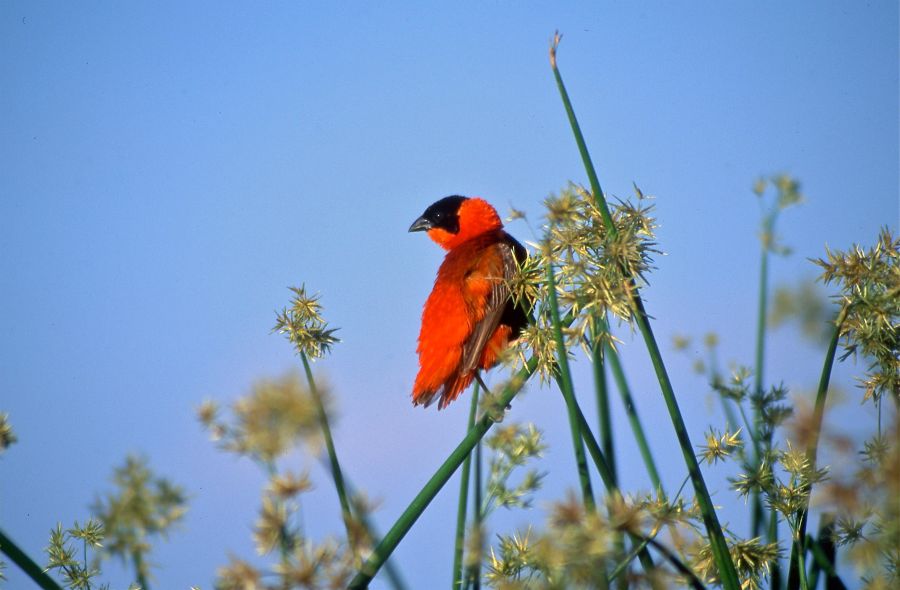
The sandgrouse are distributed across northern, southern and eastern Kenya, Specifically in desert and semi-arid areas of Samburu, Meru, Marsabit, Turkana,Lake Baringo,Tsavo west and east, and Amboseli
Sandgrouse have compact bodies, but small, pigeon-like heads and necks. The different species range in length from 24 – 40 cm and weigh from 150 – 500 g.
Males and females look alike, Some species are also polymorphic .
They have long pointed wings and short legs that are feathered down to the toes, and members of the genus Syrrhaptes also have feathered toes.
Sandgrouse mostly feed on seed and are often seen in large feeding flocks with up to 100 birds.
Sandgrouse are monogamous (form life-long pair bonds). They make their nest on a slight depression in the ground. The average clutch consists of 2 eggs, occasionally up to 4. The male and female share the incubation duties; with the male incubating during the night and early mornings, and the female taking over during the day.
The young hatch after about 20 – 25 days; and are able soon able to leave the nest.
They are able to feed themselves from the day they hatch, but have to learn foraging skills from their parents for several months.








